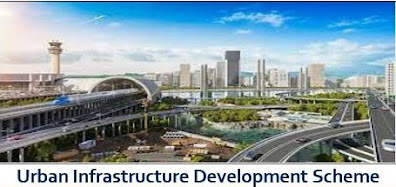A municipal bond or muni bond is a debt instrument
issued by municipal corporations or associated bodies in
India.
These local governmental bodies utilise the funds
raised through these bonds to finance projects for socioeconomic development through building bridges, schools,
hospitals, providing proper amenities to households, etc.
Such bonds come with a maturity
period of three years, whereby municipal corporations
provide returns on these bonds either from property and
professional tax collected or from revenues generated from
specific projects or both.
SEBI’s guidelines related to the issuance of municipal bonds:
> The Securities and Exchange Board of India (SEBI) revised
the guidelines related to the issuance of municipal bonds
in 2015 in an attempt to enable ULBs or local government
bodies to raise finances from such sources.
> Following this measure, different cities have capitalised
on the new guidelines to fund initiatives such as Atal Mission for Rejuvenation and Urbanisation Transformation
(AMRUT) and Smart Cities Mission.
Types of Municipal Bonds in India:
> There are primarily two types of municipal bonds in India,
categorised as per their usage.
These are:
• General Obligation Bonds: As the name suggests, General
Obligation Bonds are issued to raise finances for general
projects such as improving the infrastructure of a region.
• Repayment of the bond, along with interest, is processed
through revenue generated from different projects and taxes.
• Revenue bonds: Revenue bonds, on the other hand, are
issued to raise finance for specific projects, such as the
construction of a particular building.
• Repayment of such bonds (principal and accrued interest)
shall be paid through revenues explicitly generated from the
declared projects.
Advantages of Municipal Bonds:
• Transparency: These bonds that are issued to the public
are rated by renowned agencies such as CRISIL, which
allows investors transparency regarding the credibility of the
investment option.
• Exemption from taxation: In India, municipal bonds are
exempted from taxation if the investor conforms to certain
stipulated rules. In addition to such conformation, interest
rates generated on such investment tools are also exempt
from taxation policy.
• Low Risk: These are issued by municipal authorities, implying
involvement of minimal risk with these securities.
• Significant for ULBs: They are crucial for the financial
independence of the Urban Local Bodies.
Disadvantages of Municipal Bonds:
• The yield is low and the bonds may not be able to beat
inflation over the long term.
• The bonds lose value as the interest rate goes up and may get
traded at a value less than face value.
• There is also a need for State guarantees for the bonds.
Goal of Municipal Bonds:
India’s Urban Population: It increased from 11.4% in 1901 to
34% in 2017. According to McKinsey, it is expected to rise by
40 percent of India's total population by 2030.
Share of Urban economy in GDP: According to Census 2011,
31 percent of the India’s population live in urban areas.
Urban areas contribute more
than 60 percent of India’s Gross Domestic Product (GDP).
Impact of urbanization on per-capita income: Different studies
have found that higher urbanization levels are associated
with higher levels of per capita income.
Per capita income in terms of Net Value Added (NVA) is
Rs 98,435 in urban India while it is only Rs 40,925 in the
rural India.
Hence, there is need to urbanize India by investing more in
rural, rurban and urban infrastructure.
Utility of Municipal Bonds in sustainable urban
infrastructure:
The rapid urbanization poses several challenges such as
improving quality of urban services such as water, sanitation
and urban transport; reducing urban poverty by employment. These demands need huge financial resources to cater the
needs of infrastructure.
Requisite Investment in India’s Urban Infrastructure:
Ahluwalia committee on Urban Infrastructure (2011): High
Powered Expert Committee on Indian Urban Infrastructure and
Services was constituted by Ministry of Urban Development
under chairmanship of Dr Isher Judge Ahluwalia in 2008. In
its report in 2011, it had estimated investment requirement of
Rs 39.2 lakh crore at 2009-10 prices for urban infrastructure
over the 20-year period (2012-31).
Smart City Mission (SCM): It estimated the total cost of projects
which were proposed by the 60 smart cities (1st round
declaration) at Rs 1.3 lakh crore.
It proposed to finance only 42% of the total project by state
and central government combined.
The rest has to be raised by cities through their own
resources such as Municipal Bonds, collection of user
fees, land monetization and property tax, Borrowing from financial institutions.













